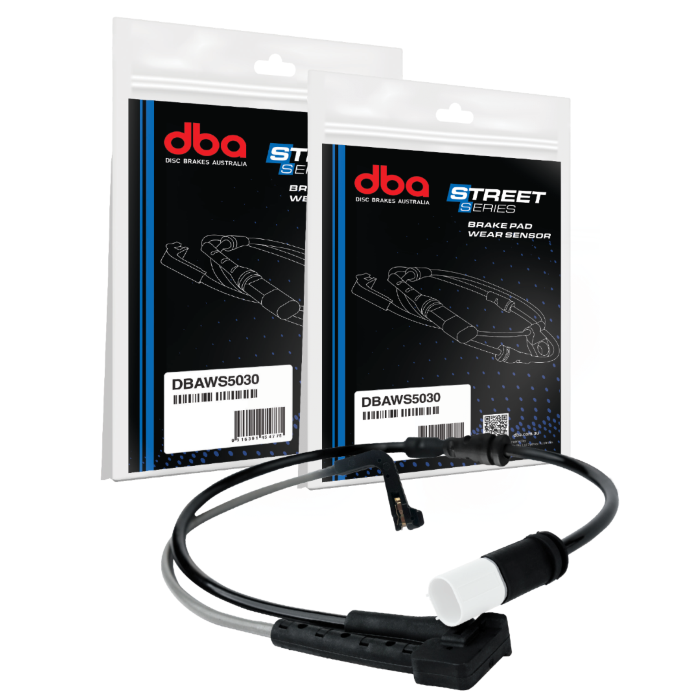
The new product line perfectly complements DBA’s comprehensive range of brake friction - consisting of over 1,500 SKUs and ranging from standard OE replacement to high performance applications. (For further details visit dba.com.au/products/friction).
Often sold as an add-on and in the same box as the pad itself, DBA now puts the customer in control by offering the option to purchase the sensor based on the actual replacement need.
STREET SERIES sensors are designed for easy replacement as part of routine brake maintenance. They have been developed for and tested in harsh Australian conditions.
It is important to remember that brake wear sensors should be part of a vehicle’s regular maintenance schedule. Keeping the sensors in good working order offers the driver a number of benefits, including
For performance and track cars, monitoring the vehicle’s braking system is even more crucial - provided a sensor-enabled pad is used. These applications typically generate more heat from braking, which can cause brake pads to wear faster, ultimately leading to potential brake failure and costly repairs. This is especially important for racers who put the pads through heavy work on the track and then continue driving on public roads on the same set of pads.
DBA’s STREET SERIES comprises two types of brake wear sensors: electric and magnetic. Both types of sensors serve the same purpose, which is to monitor the condition of the brake pads and alert the driver when they need to be replaced. However, they work in slightly different ways.
Electric sensors work by using a small electric wire with a contact on its end that is built into the friction material. As the brake pad wears down, the contact moves closer to the brake rotor. When the contact reaches a certain point, it triggers an electrical circuit that sends a signal to the vehicle's computer, which then displays a warning light on the dashboard.
Magnetic sensors, on the other hand, work by using a weak magnetic field that is generated by a magnet built into the brake pad. As the brake pad wears down, more of the magnet is exposed and the magnetic field becomes stronger. As it reaches a certain threshold, a switch in the vehicle's computer is triggered, which then displays a warning light on the dashboard.
Both types of brake wear sensors offer tried and tested technology, are durable and reliable, and are typically easy to install and replace as part of routine brake maintenance.
DBA’s STREET SERIES sensors are designed for compatibility with any DBA brake pad, from the OE-replacement STREET SERIES to the upgrade STREET PERFORMANCE and XTREME PERFORMANCE ranges. Due to its multi-pad usability, the range requires less SKUs and less stock holding.
The initial release covers the equivalent of over 300 OE part numbers and is constantly being added to. Like all DBA products, its STREET SERIES brake wear sensors have been meticulously catalogued and will be available on all standard cataloguing platforms.
For further information contact DBA on 1800 730 039 or visit dba.com.au
This article is brought to you by DBA